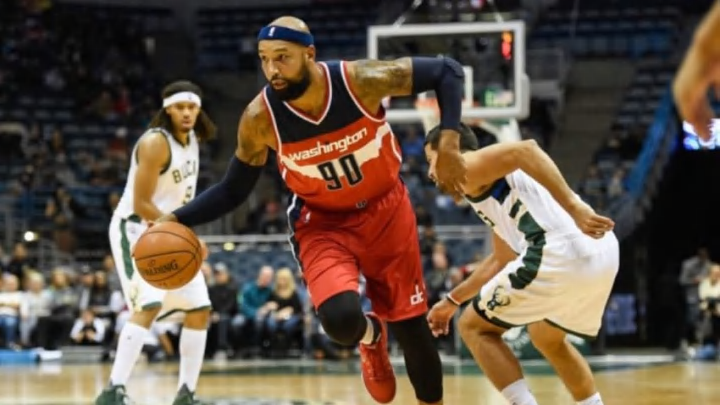The Long-Term Impact of A Top-5 Draft Bust
By Jeff Feyerer

High draft picks are the lifeblood of rebuilding teams. The higher the pick, the higher the expected reward. But what is the effect of missing on a high draft pick? How much does it truly set a team back? Conventional wisdom and basic logic suggest that missing on a top pick severely hampers an organization, but does it, and if so, how much?
Regardless of outcome of the draft pick, the average team selecting in the top 5 increases their winning percentage by 16.3% each year. This isn’t solely attributable to the newly selected player of course. Bad teams tend to get better over time for a number of reasons, including mean regression, free agent signings and so on. Still, the outcome of a high lottery selection carries plenty of weight. To simplify the analysis, I assigned each draftee player into one of several rough outcome categories, hopefully painting a clearer picture as to the impact of each general outome on the drafting team.
To group them, I took each player’s average VORP and compared it to the average VORP of the sample group, the average VORP of each pick (each #1 pick, etc), and average VORP of each year which results in a percentage above or below the average selection. The players were then grouped into one of six categories based on their career performance to: Star, Player, Relative Bust (a potential bust that hasn’t fully revealed himself yet), Bust, Trade, or Swap (2 top 5-picks that were swapped for each other).
The resulting average win % changes by category are:
That’s not a wide gap between bust and the average Top 5 pick. A few plausible reasons for the unexpectedly small difference include:
- Teams acquire another Top 5 pick they hit on in subsequent years as a result of the previous failed pick(s)
Think Denver in 2002 and 2003. The Nuggets famously missed with their #5 pick in ‘02, Nikoloz Tskitishvili, only to be awarded the #3 pick in 2003. It took a master stroke of overanalyzing by Detroit for Carmelo Anthony to fall into the Nuggets laps in the next draft, but he did, and it started the streak of ten consecutive playoff appearances by the Nuggets.
A more long range example is of the 1992-1996 Minnesota Timberwolves. Minnesota had a pick in the top five following each of those seasons, but really only hit it big on one of the picks. In consecutive drafts, the Timberwolves selected Christian Laettner, Isaiah Rider, Donyell Marshall, Kevin Garnett and Ray Allen (who was flipped on draft night for Stephon Marbury). Although the first three had some value to the franchise longer term in that they were traded in exchange for other players and assets eventually, their inability to get the team out of the doldrums led to the selection of Kevin Garnett and the subsequent (and to this point only) period of success for the Timberwolf franchise. When looking at each of these picks, Minnesota’s rolling average 4-year winning percentage went up each season because they used their assets wisely after hitting on Garnett, thus mitigating the bust effect that could have happened.
- Teams spend money or make trades to acquire players to support the performance of OR correct for a mistake on a high draft selection
Michael Beasley was selected in 2008 and while he is certainly accurately classified as a bust, the Heat’s winning percentage over the 4-year span increased by 44.2%. Something tells me that had a little something to do with the arrival of LeBron James and Chris Bosh two seasons later. In a vacuum, Beasley was a disaster on the court. But the Heat were able to correct for that, by dipping heavily into the free agent market.
Another case is Hasheem Thabeet in Memphis. The Grizzlies’ winning percentage went up 29.5% over a 4-year span despite Thabeet giving them essentially nothing. The majority of this improvement can be attributed to a) The growth of Gasol, who was acquired the previous year to supplement the team’s young core of Rudy Gay, OJ Mayo and Mike Conley and b) that summer’s acquisition of Zach Randolph.
- Drafted players are used as an asset to acquire better veterans
Next to the drafting of Tim Duncan by the Spurs, the largest 4-year increase in winning percentage of a team over the 20-year time period was the Celtics drafting and subsequent trading of Jeff Green. Say what you will about Green, a relatively functional NBA player who found his way back to Boston later in his career, he would not have been responsible for a 42.1% increase in winning percentage. The acquisition of Ray Allen was the perfect execution by Boston of taking an unknown but valuable commodity in Green, finding a partner that is willing to take that risk and turning it into something better.
That trade was made before Green set foot on an NBA court. Another approach is to draft a player and then trade him for a better fitting asset while he still has value on the open market. Drew Gooden has had a decent NBA career, but compared to expectations for a Top 5 pick, he has been a mild disappointment. Yet in the four years following his selection, the Grizzlies winning percentage went up 28.7% because they dealt Gooden to Orlando for Mike Miller. Miller was a good but not great NBA player at his peak, in addition to being a better fit for that Grizzlies team. Though they finished with the 2nd worst record in the league that first season with Miller, the trade eliminated the positional redundancy between Pau Gasol (another top-5 pick) and Gooden and evened out their rotation. Three straight playoff appearances ensued, beginning in 2003-2004. And that was done without a #2 pick in 2003 that was owed to Detroit that was eventually used on Darko Milicic.